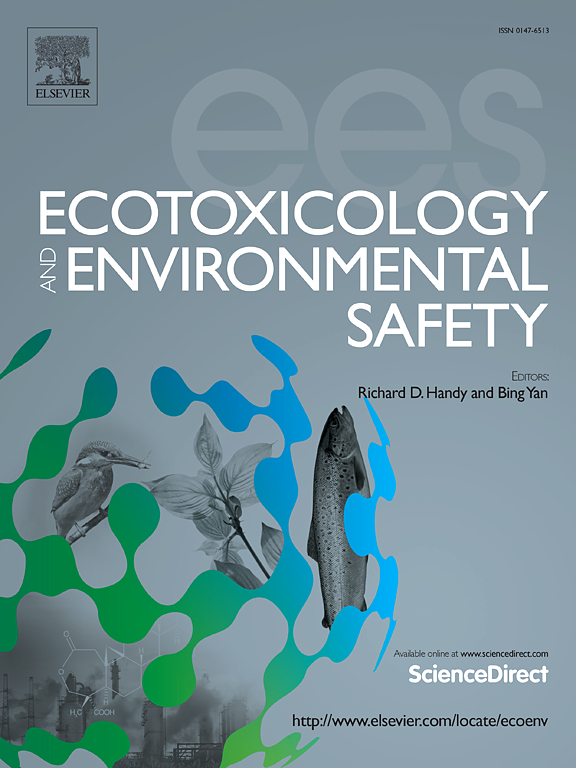细胞壁在植物对重金属的反应中起作用
IF 6.2
2区 环境科学与生态学
Q1 ENVIRONMENTAL SCIENCES
引用次数: 0
摘要
非必需金属(如镉(II)等)和必需重金属(如铜(II)等)在高浓度时都对植物有毒。植物细胞壁由果胶、纤维素、半纤维素、木质素和蛋白质组成,是重金属离子进入细胞质的第一道屏障。重金属离子在细胞壁组分内的结合很大程度上是由官能团的负电荷决定的。细胞壁与重金属离子的相互作用主要有三种机制:离子交换、螯合模型和细胞壁重塑。各种信号分子如一氧化氮和水杨酸都参与了细胞壁成分的调节。越来越多的报道表明,microRNAs可以靶向与细胞壁合成和修饰相关的基因,从而介导细胞壁内重金属的固定。本文就重金属胁迫下细胞壁组分的生物合成、修饰和功能等方面的研究进展进行综述。我们还讨论了重金属细胞壁固定的相互作用机制和信号通路,为植物重金属胁迫耐受机制提供了有价值的见解,并为减轻重金属污染提供了战略途径。本文章由计算机程序翻译,如有差异,请以英文原文为准。
The cell wall functions in plant heavy metal response
Nonessential metals (e.g., cadmium (II), etc) and essential heavy metals (e.g., copper (II), etc) are both toxic for plants at high concentrations. The plant cell wall, which consists of pectin, cellulose, hemicellulose, lignin and proteins, acts as the first barrier for heavy metal ions to enter the cytoplasm. The binding of heavy metal ions within cell wall components is largely determined by the negative charges of functional groups. The cell wall interacts with heavy metal ions through three main mechanisms: ion exchange, chelation models and cell wall remodeling. Various signaling molecules such as nitric oxide and salicylic acid have been implicated in the regulation of cell wall components. An increasing number of reports indicate that microRNAs can target genes related with cell wall synthesis and modification, thereby mediating heavy metal fixation within the cell wall. In this review, we summarize recent advances in understanding the biosynthesis, modifications, and functions of cell wall components under heavy metal stress. We also discuss the interaction mechanisms and the signaling pathways involved in the cell wall-mediated fixation of heavy metals, offering valuable insights into plant heavy metal stress tolerance mechanisms and providing strategic avenues for mitigating heavy metal pollution.
求助全文
通过发布文献求助,成功后即可免费获取论文全文。
去求助
来源期刊
CiteScore
12.10
自引率
5.90%
发文量
1234
审稿时长
88 days
期刊介绍:
Ecotoxicology and Environmental Safety is a multi-disciplinary journal that focuses on understanding the exposure and effects of environmental contamination on organisms including human health. The scope of the journal covers three main themes. The topics within these themes, indicated below, include (but are not limited to) the following: Ecotoxicology、Environmental Chemistry、Environmental Safety etc.

 求助内容:
求助内容: 应助结果提醒方式:
应助结果提醒方式:


